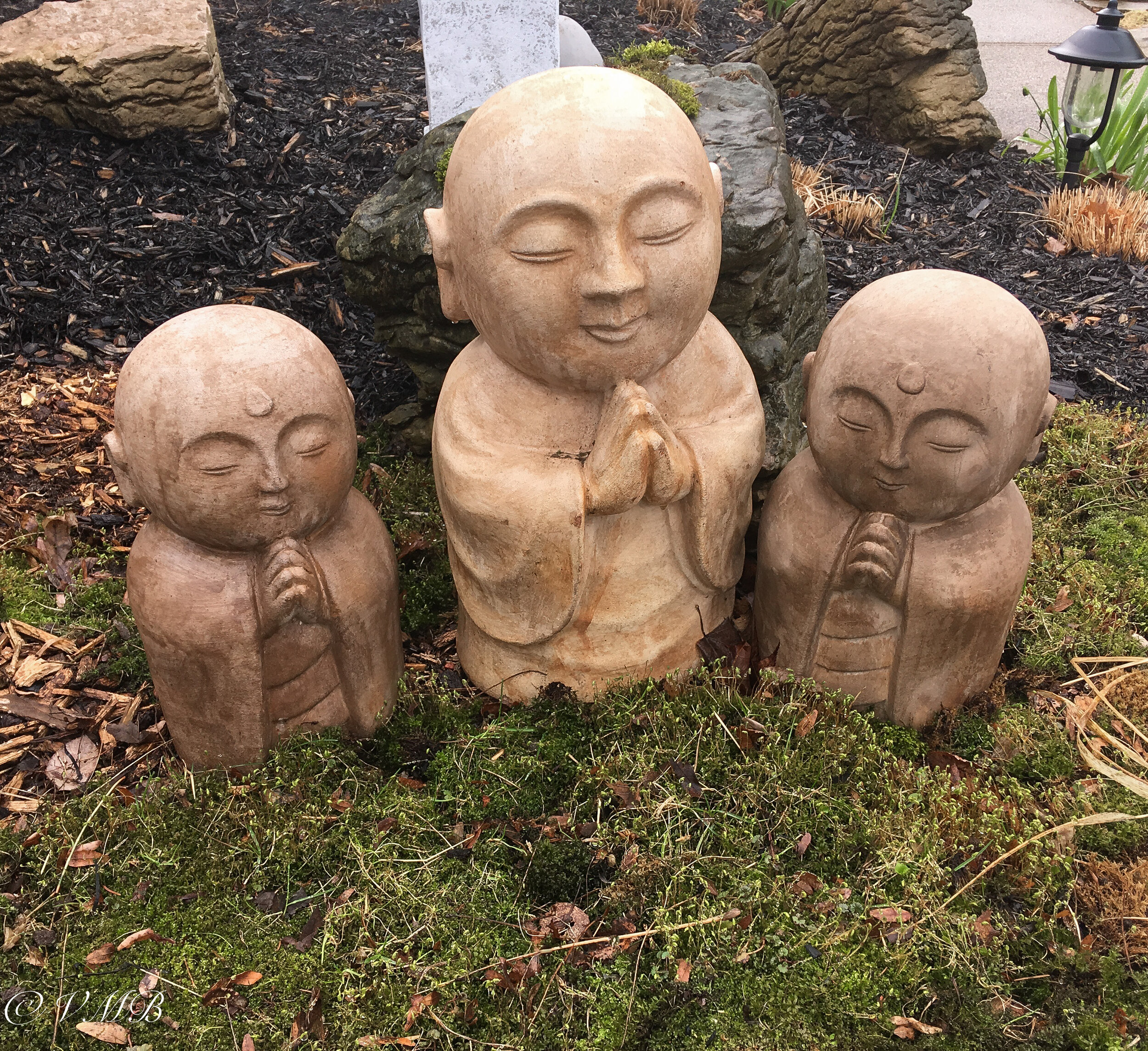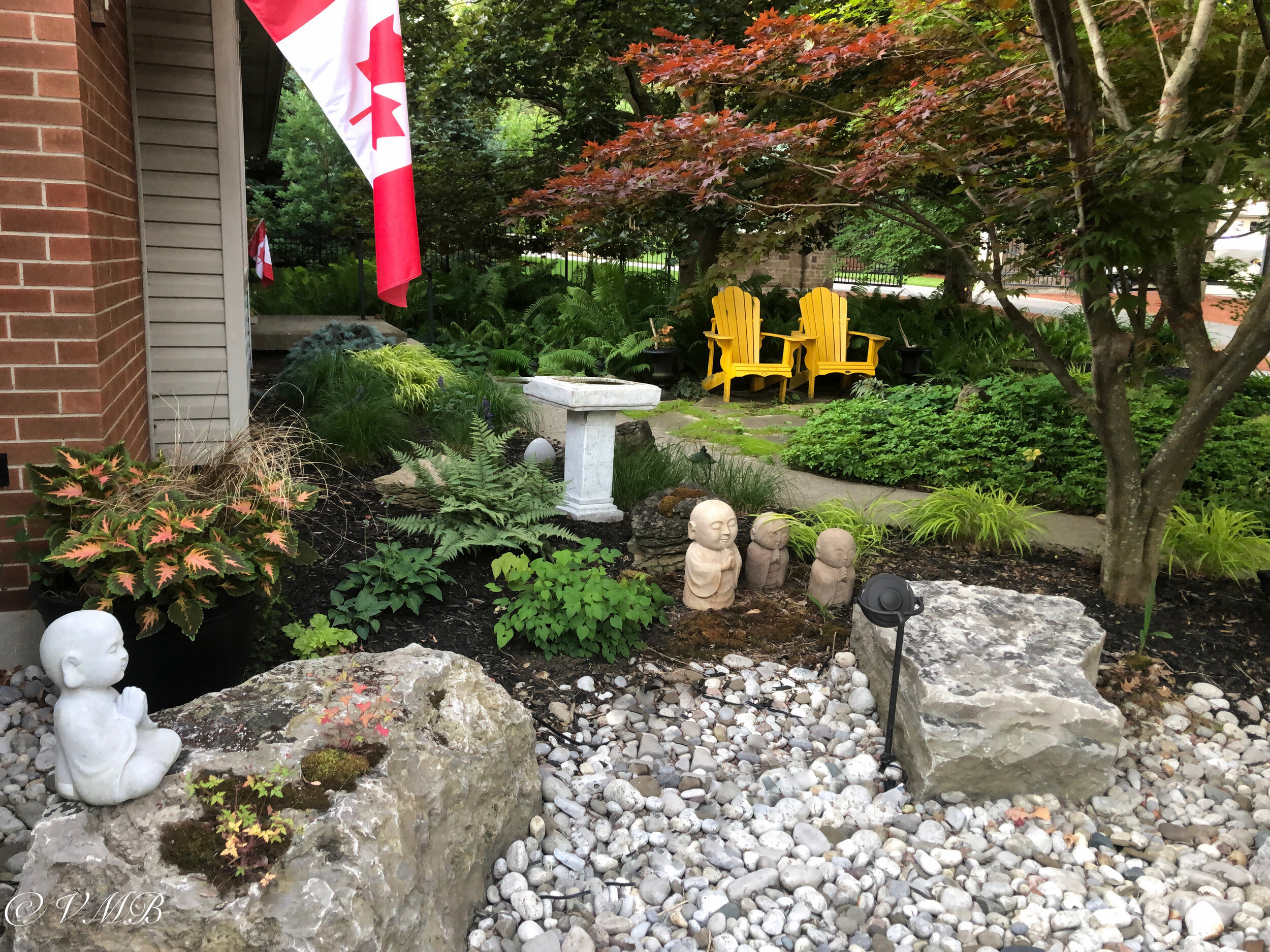Japanese inspired garden: Six elements to success
Japanese-inspired gardens are meant to look simple but are, in fact, highly designed, nature-inspired landscapes. Stone, water and plants form the structure of a Japanese garden with Japanese Maples, small evergreens and moss adding life to the design.
Finding serenity in a Japanese inspired woodland
I’ve always loved the peacefulness a Japanese garden evokes.
They seem so simple, yet, in reality, are highly thought-out designs that reflect the natural world. This appearance of simplicity hides what often is the meticulous placement of elements in the garden.
The main purpose of the Japanese Garden is to create a feeling of serenity and nature. A well designed Japanese garden strives to remind us of a natural landscape, but, in fact, is a carefully controlled landscape highly designed and maintained. They are nature-inspired, but it’s unlikely you will ever find them growing naturally. But that doesn’t mean they don’t evoke feelings of some of your greatest memories of wandering through the woodlands and coming across a beautiful moss-covered grove with large boulders protruding from the ground.
For more suggestions and some of my favourite garden things, be sure to check out my Favourite Things post.
Three elements make up the Japanese garden: Stone forms the structure of the landscape; water which gives it a life-giving force; and plants that provide what little color and changes the gardens provide throughout the seasons.
With all this in mind, I embarked on my Japanese-inspired garden.
If you love Japanese gardens and want more information, be sure to check out my post on Using Japanese Maples in the landscape. For more on the majesty of a mature Japanese Maple. Weeping Japanese Maples for landscapes big and small.
The Japanese-inspired garden in late spring with the blue Fish In The Garden moving through the plants.
The plan was to create a garden that would hide the fact that our home’s garage was long ago converted into a family room. Up until the garden was installed, the driveway’s blacktop came right up to our family room where the garage doors were once located. It never looked right to me and emphasized the garage conversion. So, by reducing the length of the driveway by adding large boulders, pea gravel and square cut gray flagstone, we were able to not only create the Japanese-inspired garden, but hide the fact that the family room was once a garage.
Three Japanese maples, the large boulders surrounded by pea gravel, a fern, moss and a bird bath combine to create an area that allows the primarily woodland garden to showcase a separate japanese-inspired garden area.
Key Components of a Japanese Garden
Adding Japanese garden art helps to create the mood of the garden.
1) A single large boulder or several large boulders (depending on the size of the garden) form the basic structure of a Japanese Zen Garden. Stone in a Japanese garden represents longevity and the forces of the nature. They anchor the garden to the ground and give it its specific personality. They should always be buried in the ground to look like they are emerging from the sand or stone they are on. Stones are laid out depending on their shapes and sizes. Their placement is key to creating a cohesive look. Look for boulders that are different in size and shape. A bonus is if you are able to grow moss on the boulders to give them a lovely aged look.
2) Pea gravel or sand surrounding the boulder(s) is another structural element. In zen gardens, it represents water, or, like the white space found in Japanese paintings, emptiness and distance. They are perfect places for meditation. In Zen gardens, the pea gravel is meticulously raked to create the illusion of waves surrounding an island of stone.
3) Incorporating evergreens (often pine trees) not only gives the garden year-round interest but they add a sense of permanence. Preferably, the evergreens should be smaller, slow-growing specimens that can be trimmed and either given a bonsai look or kept on the small side. The large boulders are the perfect place to display bonsai specimens either growing in pots or in pockets carved out of the boulders.
4) A water source is another important garden feature. It is said to represent renewal, calm, wonder and continuity in the garden. Everything from a small on-ground stone pool to an electric fountain or a bird bath can be used. There are many alternatives available which can either be created or bought commercially. Every effort should be made to keep and commercial products in keeping with the Japanese theme.
5) A beautiful Japanese Maple (or several) can either become a focal point or used as smaller trees in the landscape. Their natural form complements the garden style and they can be used as bonsai.
6) Statuary really helps to bring the Japanese theme into the landscape. Sculptured in stone, the Yukimi-gata lantern, sometimes called the snow lantern, was originally intended to guide visitors during evening events. Its light was also considered the light of knowledge clearing away the clouds of ignorance. Praying Jinzu statues positioned in strategic areas will delight garden visitors.
The Japanese-inspired Garden includes large boulders that provide a strong foundation and a mature Japanese Maple planted more than 20 years ago.
Keep garden proportions in check
Keep garden structures such as pathways and plantings in proper size relative to a human body.
Feel free to use a variety of plant sizes to keep the eye moving around the space.
Balance large trees with gradually smaller trees and shrubs to bring them into scale.
My Japanese-inspired garden plan was given a major boost when a neighbour over estimated the number of boulders needed for a large landscape project and I was able to nab 11 massive limestone boulders. Four of the boulders formed the structure of the Japanese-inspired garden. The rest were used as a retaining wall for the driveway. But they all worked together to provide the foundation of the Japanese garden.
Adding to the basic structure was a large Japanese Maple I planted the year we moved into the house twenty-plus years ago. Back then, Japanese Maples were just beginning to gain in popularity in this area of Southern Ontario. Time has turned the sapling into a beautiful, full-size multi-stem specimen.
With the basic structure in place, we placed square-cut, blue flagstone through the space and moved yards of river rock and pea gravel into place around them. The flagstones provide a path from the front of the home to the backyard.
A small cutleaf weeping form of Japanese maple backed by large grasses took it’s place on the opposite side of the larger mature specimen.
Under the mature Japanese Maple, I’ve planted variegated Japanese Forest grass, a clump of epimedium, a ghost fern and a couple of very small blue hosta. The connected garden that stretches across the front works as a transition from the Japanese-inspired garden to the Woodland garden that dominates the rest of the property. The front garden contains several small fountain grasses, a large clump of Japanese Forest grass to complement the clumps around the mature Japanese Maple and a large horizontal blue spruce ( picea pungens Dietz) all on a black mulch backdrop.
Where the stone meets the garden, just beside a square birdbath water feature, we’ve added three small Jinzu praying on a bed of moss. The three statues represent our small family – me, my wife and our daughter.
It’s also important to include evergreens into the design. We have two – the horizontal blue spruce and a serbian spruce growing in a container on the square-cut flagstone pathway.
Low-voltage lighting allows us to enjoy the garden both day and night.
This page contains affiliate links. If you purchase a product through one of them, I will receive a commission (at no additional cost to you) I try to only endorse products I have either used, have complete confidence in, or have experience with the manufacturer. Thank you for your support. This blog would not be possible without your continued support.




